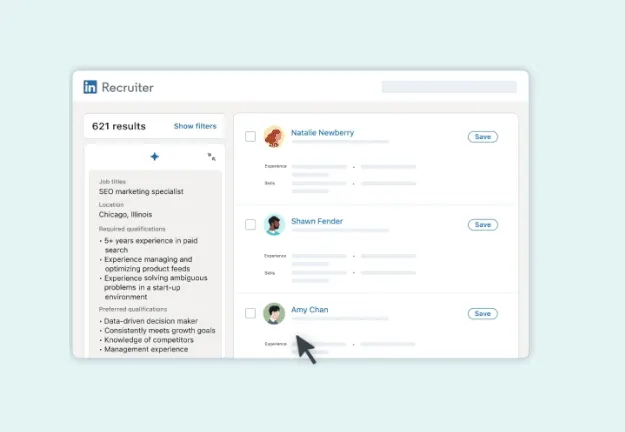How you prioritise your work is one of the major ways you determine what you get done.
Different people require different times and schedules to do their best work.
According to influential tech founder and investor Paul Graham in his 2009 essay, there are two major types of schedules that different people require to work effectively:
- Makers: Makers are the people who are creating new things (whether it is a design, code, innovative solution concept, scientific formula or piece of art) and solving problems where the answer is not clear. Makers need time to get deep into a single task and achieve flow, and so work best when they can have long stretches of uninterrupted time to make progress on a single task, often several hours or even days in a row.
- Managers: Managers like to fill their calendar meetings from start to finish, in order to make important decisions quickly and help others progress on things that require their input or for them to unlock. Often, meetings can be short (30, 15 or even 5 minutes) but should be booked in the calendar. As a result, a manager’s schedule often looks like a full series of back to back meetings.
An example of what an ideal schedule for a maker (left) and a manager (right) is illustrated in the imaginary calendar below:

Left: Makers’s schedule, Right: Manager’s schedule
Makers are especially likely to feel like they are doing their best work when they can see they are making progress. This is called the progress principle, and often requires these individuals or teams to have enough uninterrupted time to fully immerse in a task or challenge in order to not only think about it, but also try and find a solution, design it, test it and iterate until they are happy with it.
The problems which meetings cause
While managers have no problem going from meeting to meeting in a day, the challenge arises when makers are forced to interact with managers and their expectations.
Research has shown time and again that every time we are distracted while trying to do something creative or innovative, it can take more than 20 minutes to get back to being productive. This is the cost of task switching.
And if a maker is trying to get into a focused state to make progress on a creative task, it is not just distractions of an incoming message or colleague who wants a chat which can ruin progress. Even just knowing that you have a single meeting later in the day can ruin productivity for a whole day.
As Graham notes:
When you’re operating on the maker’s schedule, meetings are a disaster. A single meeting can blow a whole afternoon, by breaking it into two pieces each too small to do anything hard in. Plus you have to remember to go to the meeting. That’s no problem for someone on the manager’s schedule. There’s always something coming on the next hour; the only question is what. But when someone on the maker’s schedule has a meeting, they have to think about it.
For someone on the maker’s schedule, having a meeting is like throwing an exception. It doesn’t merely cause you to switch from one task to another; it changes the mode in which you work.
I find one meeting can sometimes affect a whole day. A meeting commonly blows at least half a day, by breaking up a morning or afternoon. But in addition there’s sometimes a cascading effect. If I know the afternoon is going to be broken up, I’m slightly less likely to start something ambitious in the morning. I know this may sound oversensitive, but if you’re a maker, think of your own case. Don’t your spirits rise at the thought of having an entire day free to work, with no appointments at all? Well, that means your spirits are correspondingly depressed when you don’t. And ambitious projects are by definition close to the limits of your capacity. A small decrease in morale is enough to kill them off.
Another challenge is that many managers believe their actual role is to “help” teams make progress by having meetings and discussing work. Otherwise, how could they prove that they are managing effectively? Ironically, this way of manageing may actually be what is preventing your makers from getting any productive work done.
Finally, as teams grow, the more team members there are, the more time and mental effort needs to go into interacting with and updating other team members. This can quickly begin a spiral where different team members spend more time in meetings each day than actually being able to do productive work, often bringing their productive output to a complete halt.
How to have makers and managers work together effectively
However, we also know that in an organisation, we need to find ways for managers and makers to interact, in order to ensure that progress is indeed being made and is aligned with what the organisation needs.
So how can we find a schedule which works for both makers and managers?
One effective way proposed by Cal Newport, and involved having Dual Schedules: agree with everyone involved time blocks when meetings can take place, but also when makers can focus completely on their work and not be interrupted.
For example, Monday, Wednesday and Friday might be maker days: you cannot schedule meetings with makers on these days, and emails sent to them will be held by the server until the day is over.
In this case, Tuesday and Thursday would be the only days when you can schedule meetings with the makers, allowing them to focus fully on their work three days a week.
You can also see a great video of how Alex Hormozi implemented this if you need inspiration of how it could work for you.
There are also much more extreme ways to make sure makers have time to do deep work, such as by completely isolating themselves for entire “seasons” of work, which might be weeks or months at a time, during which they can begin, work on and complete entire creative or business projects.
This might however by bit too overzealous for teams which need to interact with each other.
With my teams, I like to ensure that they have the ability to block out extended blocks of “Focus time”, which you can now do easily in most calendar software, preventing that time being available for spontaneous meetings and catch ups.
What type of schedule do you use? A manager’s or a maker’s? And how do you work best with other people? Let me know in a reply below.
Creativity & Innovation expert: I help individuals and companies build their creativity and innovation capabilities, so you can develop the next breakthrough idea which customers love. Chief Editor of Ideatovalue.com and Founder / CEO of Improvides Innovation Consulting. Coach / Speaker / Author / TEDx Speaker / Voted as one of the most influential innovation bloggers.








